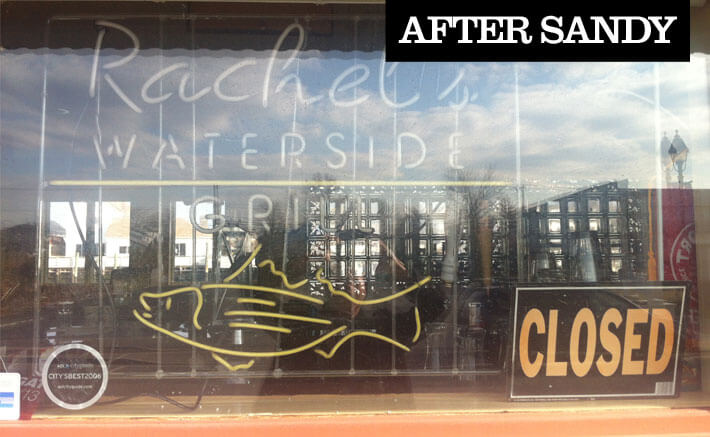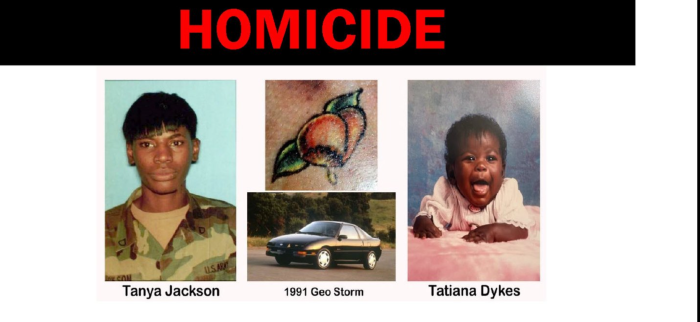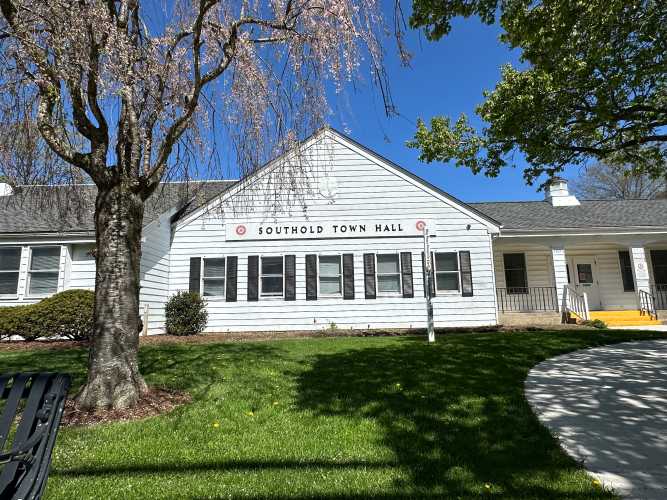
COMEBACK KIDS
For all the destruction, it’s not all doom and gloom. Some businesses were buoyed by Sandy’s unwelcome arrival.
Car rental companies saw so much demand that the state had to step in to get more rentals to the region for those who lost vehicles in the floods. Gas stations—the ones that were open, anyway—became instant goldmines during the gas crisis. The restaurants that remained open during the blackout saw similar crowds. And hotels on LI are at 90 percent capacity on average during a time of year when they’re normally at 58 percent, according to Moke McGowan, president of the Long Island Convention and Visitors Bureau.
The off-season boost to the hospitality biz is thanks to the thousands of out-of-state utility workers helping the Long Island Power Authority, insurance adjusters flown in to inspect damage, FEMA staffers, displaced Long Islanders and others filling hotel rooms.
McGowan says the tourism season should be fine next summer despite erosion to LI’s award-winning South Shore ocean beaches and serious damage to famed boardwalks at Jones Beach, Long Beach and still-closed Robert Moses State Park.
“I think were going to be in fairly decent shape come summertime,” he says, noting that Gold Coast mansions, East End farms, museums and other destinations escaped serious damage. “Most of the damage really struck our residential communities more than it struck the tourism infrastructure.”
An estimated 100,000 homes were damaged in the storm. That’s made a lot of home improvement contractors busy making temporary repairs through a FEMA program aimed at patching LI houses instead of putting the displaced in trailers or other temporary housing.
The future permanent repairs and larger infrastructure projects such as rebuilding five miles of destroyed Ocean Parkway and the failed Bay Park Sewage Treatment Plant will also keep contractors busy for months and years to come.
“I think it’s on a roll where things are getting done quickly and efficiently,” says James Castellane, president of the Building and Construction Trades Council of Nassau and Suffolk. “It’s going to take a long time and a lot of people to come together and work and get it done.”
He says four-member teams of carpenters, electricians, plumbers and laborers have been dispatched to the hardest-hit communities to help expedite the rebuilding process as winter’s arrival nears. That’s helped turnaround unemployment in the trades.
DUSTING OFF
The day before Sandy struck, Gerianne Reilly, owner of Over the Bridge Home and Garden Décor in the idyllic North Shore village of Bayville, advertised candles and lanterns on her store’s Facebook page anticipating the blackout.
Instead, Sandy forced her to close up shop for three weeks after the storm flooded her entire store, destroying $7,000 worth of inventory despite preparations. Reilly, who runs the store herself with no employees, says the first week of cleanup was “heart-wrenching.”
“I was just throwing things into black bags,” she says.
Things haven’t gotten much easier since she reopened Nov. 17. Sandy’s storm surge broke through the sea wall protecting West Shore Road, leaving it impassable and cutting off Bayville Bridge, the quicker of two routes to its namesake village.
Reilly is concerned that the projected nine-month-long road closure during its reconstruction will discourage out-of-town shoppers from driving the long way to the village through Bayville Road next summer.
“My worry is that people are going to say, ‘I’m not doing that, it’s too far now, it’s not convenient for me,’” she says.
Seasonal business or not, it was difficult getting in the holiday spirit on the South Shore, too.
“[December] could be the best month of the year, depending on the economy,” says Dave Juan, co-owner of unsOund surf in Long Beach. “We lost a big, big month.”
The popular surf shop typically fills up during the holiday season with parents shopping for surfboards and wetsuits to place under the Christmas tree but it will likely be closed until March, he says.
The entire store had to be gutted after an unwelcome wave crashed into it the night of the hurricane.
Between running his two surf shops—he also owns a Quiksilver shop in Oceanside—and dealing with the damage to his Long Beach home, the past month has been extremely frustrating for him.
“It’s just been so confusing,” Juan says. “To the landowners, to the insurance brokers and agents and adjusters, I think it’s just been way too overwhelming for everybody.”
Still, some shopkeepers who considered closing up for good post-Sandy have had a change of heart.
Andrea Shulman was about to give up her dream store, Pinup Clothing Boutique in Long Beach, after the flood ruined her inventory.
“The ocean took over my store,” Shulman says.
Her landlord was no help. Her insurance didn’t cover flood damage. She was ready to give up.
“I had many good loyal customers that made me come back,” she says.
Now, Shulman is operating from her home and communicating to her customers through Facebook. Her living room has become her storefront and she hopes to find a new location by spring.
It may be bad timing for those looking to recoup their losses over this holiday, but seasonal businesses have a silver lining in that they have the winter to rebuild.
“It’s better that this happened Oct. 29 rather than June 29,” says Saccente of the restaurant association, who was cautious not to downplay the catastrophe.
There is an emotional toll in addition to the economic losses.
“You own your own business [and] pretty much that’s it, that’s your life, that’s your retirement, that’s everything you put into it,” says Sayles of Rachel’s in Freeport. “Your heart and soul you put into it, and it gets taken away…it’s just devastating.”
With additional reporting by Laura Cerrone
Fundraiser: Donate to unsOund surf.
































